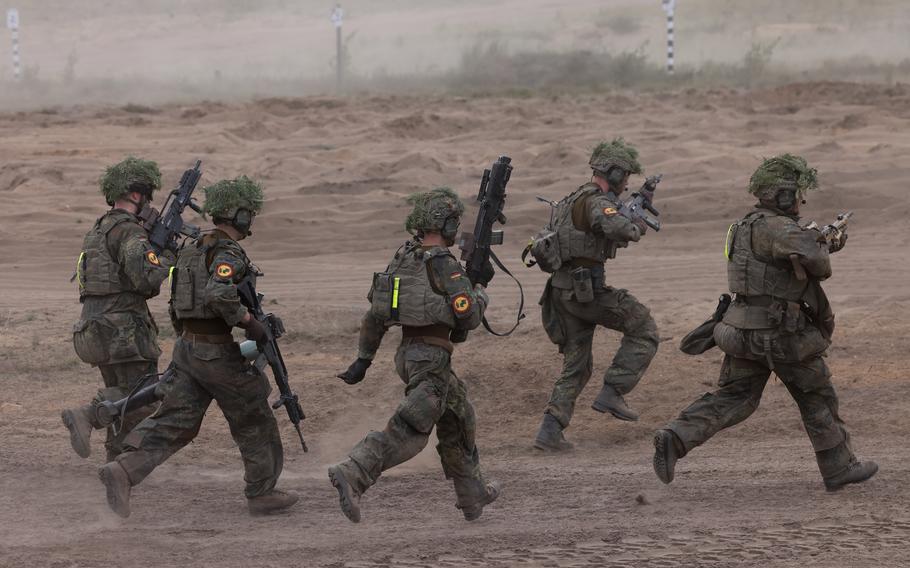
German soldiers take part in a drill during the NATO Quadriga military exercise, in Pabrade, Lithuania, on Wednesday, May 29, 2024. (Andrey Rudakov/Bloomberg)
The North Atlantic Treaty Organization wants Germany to contribute as many as 40,000 more troops for the alliance’s defense against Russia, according to people familiar with the matter.
The demand, which would add the equivalent of seven brigades, comes as part of a NATO review of its military capability targets, said the people, who spoke on the condition of anonymity as the discussions are not public. The alliance has grown concerned about heightened Russian hostility since the country’s full-scale invasion of Ukraine in 2022.
NATO defense ministers are expected to discuss the plan, which was first reported by Reuters on Wednesday, during a meeting in Brussels next week intended to address new targets for weapons and troop numbers. There is no concrete time frame for deploying the additional troops, the people said, noting that a target date of 2030 would be desirable, if unrealistic.
Next week’s discussions could see overall brigade targets for NATO allies rise from around 80 to between 120 and 130, according to the Reuters report.
A defense ministry spokesman declined to comment on the figures, adding that the matter would be discussed at the meeting. A NATO official confirmed that the alliance “is setting ambitious new capability targets for Allies.”
With President Donald Trump expected to roll back U.S. security commitments to Europe, German Chancellor Friedrich Merz has pledged to play a greater role in the continent’s defense. The new center-right leader has vowed to revitalize the German military and transform it into Europe’s strongest conventional army.
As part of this push, Germany is currently ramping up a new brigade in Lithuania, with as many as 5,000 personnel expected to be on the ground by the end of 2027. That effort, which will count toward the NATO quota, will be the country’s first battle tank brigade to be permanently deployed abroad since World War II.
So far, Germany has pledged to provide NATO with 10 brigades of roughly 5,000 troops each by 2030. The country currently has nine brigades, including the one in Lithuania.
Low enlistment is one of the main challenges currently facing Germany’s armed forces. To encourage more young people to sign up for military service, the government recently passed a law to improve pay and working conditions for soldiers deployed abroad.
The ruling coalition has also agreed to introduce a new model of voluntary military service.
Should that fail to attract enough people, however, politicians might be forced to re-introduce compulsory military service. That was paused under former chancellor Angela Merkel.